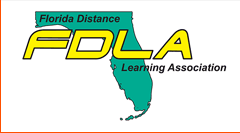Abstract
Using best practices for teaching mathematics like GeoGebra, math manipulatives, and children’s literature picture books can all be connected to each other and better help to prepare students for a STEM world to develop confident young people in doing mathematics in a world of AI and emerging technologies. This paper will highlight all the above best practiced and share how they can be connected and taught in a way that is make math meaningful and help students to be confident with technology and mathematics in a way that helps them see math in a hands-on, visual, and abstract way. Learners can be digitally engaged with GeoGebra, Virtual and/or actual math manipulatives, and children’s math literature/picture books. This paper will give an overview of the theory of these best practices, discuss manipulatives, the use of GeoGebra software in learning mathematics, and show the connections to the picture books and everyday life math skills. The goal in using such best practices in mathematic is to develop confident young learners for a STEM world where so much of the technology now focuses on AI and emerging technologies to motivate learners, creating blazing new pathways for digital engagement in mathematics learning.
Recommended Citation
Furner, Joseph M.
(2024)
"Blazing New Pathways for Digital Engagement in Mathematics Using GeoGebra, Math Manipulatives, and Picture Books in a STEM World to Nurture Confident Young People in Mathematics,"
FDLA Journal: Vol. 8, Article 11.
Available at:
https://nsuworks.nova.edu/fdla-journal/vol8/iss1/11
Included in
Curriculum and Instruction Commons, Educational Psychology Commons, Online and Distance Education Commons, Science and Mathematics Education Commons, Teacher Education and Professional Development Commons
